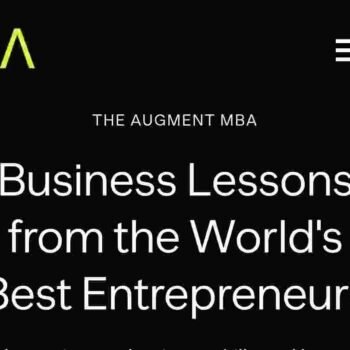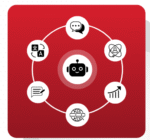The Pierre Herubel – Content-First Ecosystem: A New Era of Growth-Driven Marketing
$97.00 Original price was: $97.00.$29.00Current price is: $29.00.
In the modern digital landscape, content is not merely a marketing tool — it is the very foundation upon which a brand’s presence is built. The Pierre Herubel – Content-First Ecosystem embodies this principle by transforming how companies design, distribute, and measure content. Instead of viewing content as a byproduct of marketing, this approach turns it into the strategic nucleus of growth.
Unlike traditional marketing systems that treat content as an isolated activity, the content-first ecosystem integrates every business function around it — from SEO and branding to analytics and conversion optimization. As a result, companies adopting this model experience more consistent visibility, stronger audience trust, and sustainable digital authority.
What Exactly Is a Content-First Ecosystem?
A content-first ecosystem is a comprehensive and interconnected marketing framework that places content strategy at its core. In this system, every channel — whether it’s social media, email, or paid campaigns — operates in harmony with the content plan.
Through the Pierre Herubel – Content-First Ecosystem, each piece of content serves a defined purpose. It educates, nurtures, or converts audiences while feeding data back into the system for continuous improvement. Moreover, this framework ensures that your brand’s tone, message, and storytelling remain consistent across every digital touchpoint.
Instead of producing isolated posts or articles, brands following this structure create a self-reinforcing network of content assets. Consequently, each publication boosts others through strategic linking, topic clustering, and audience re-engagement.
Why Traditional Content Models Fail
Most organizations still rely on outdated, fragmented marketing approaches. They produce content on demand without a unified strategy, which leads to wasted effort and inconsistent messaging. Additionally, teams often work in silos — SEO specialists, copywriters, and social media managers follow different agendas.
Because of this lack of coordination, valuable assets remain underutilized, traffic fluctuates, and ROI diminishes. Even worse, content becomes obsolete quickly due to the absence of systematic updates.
By contrast, the Pierre Herubel – Content-First Ecosystem ensures cohesion. It transforms isolated actions into an interconnected cycle where creation, distribution, and measurement feed one another. As a result, your marketing becomes both sustainable and scalable.
Core Principles Behind the Pierre Herubel Framework
1. Strategic Content Architecture
Every successful ecosystem starts with structure. You need cornerstone or pillar content — comprehensive resources around major topics your audience cares about. Around these pillars, create cluster articles that cover subtopics in depth and link back to the main piece.
This architecture not only enhances SEO but also improves user experience by providing a logical path of discovery. Furthermore, maintaining a consistent content map and publishing calendar keeps your output aligned with both audience intent and business goals.
2. SEO Integration Without Overstuffing
Search optimization should begin before you write the first line. Start by performing thorough keyword research, mapping primary and secondary terms, and identifying search intent. However, avoid overusing exact phrases. Instead, weave in semantic keywords and related expressions to maintain a natural tone.
When applied effectively, this SEO-first mindset strengthens authority without sacrificing readability. Moreover, on-page elements like optimized titles, meta tags, image alt text, and internal links should be part of the content from the start — not added as an afterthought.
3. Modular and Reusable Content Design
A defining strength of the content-first ecosystem lies in its modularity. One comprehensive article can yield numerous micro-assets — short posts, infographics, video scripts, and email snippets. By repurposing, you multiply reach without multiplying workload.
For instance, a long-form guide might later evolve into social threads, podcast episodes, or interactive tools. Therefore, every piece of content you create should be designed for flexibility and future adaptation.
4. Multi-Channel Amplification
Publishing alone is never enough. Once your core content is live, distribute it across owned, earned, and paid channels. On your website and email lists (owned), you control the message entirely. Meanwhile, collaborations and guest appearances (earned) expand your authority. Finally, paid promotions provide short-term boosts to fuel early visibility.
In addition, community engagement and social media storytelling play vital roles in amplifying your reach. Every channel contributes to the broader ecosystem when aligned properly.
5. Continuous Optimization Through Data
No ecosystem is static. Through analytics and regular measurement, you can refine your performance. Track engagement metrics such as dwell time, scroll depth, and conversion rates. Over time, data-driven insights reveal which content formats, topics, or headlines resonate most.
By applying these insights, your next content cycle becomes smarter and more efficient. Ultimately, this iterative process is what keeps the ecosystem alive and evolving.
Implementing the Content-First Ecosystem: A Step-by-Step Approach
Step 1: Conduct a Comprehensive Audit
Begin by analyzing your existing content assets. Evaluate which pages attract organic traffic, which generate engagement, and which underperform. Next, identify keyword gaps — topics your audience is searching for but you haven’t yet covered. This audit forms the baseline for improvement.
Step 2: Develop a Unified Content Strategy
After understanding your current landscape, establish clear strategic pillars. Select a few high-value themes that align with your brand’s expertise and audience interest. Then, create a 6- or 12-month editorial roadmap. This ensures consistent production while preventing redundancy.
Step 3: Produce SEO-Driven Pillar Content
Craft in-depth, high-quality resources that address audience pain points comprehensively. Use keyword mapping to structure subtopics logically, and include internal links to relevant cluster pages. Moreover, apply schema markup and proper heading hierarchy to improve search visibility.
Step 4: Repurpose and Distribute Strategically
Once published, slice the content into smaller, contextually relevant pieces. Use them for newsletters, reels, carousel posts, or webinars. Additionally, partner with influencers or media outlets to extend reach. Each micro-content item should guide users back to the main source, reinforcing your ecosystem loop.
Step 5: Measure, Refresh, and Expand
Analyze results regularly. If a piece begins losing traction, refresh it with updated data, improved visuals, or new insights. Over time, expand your topic clusters by adding emerging trends and FAQs. In doing so, your content remains dynamic and relevant.
Benefits of Adopting a Content-First Ecosystem
The impact of the Pierre Herubel – Content-First Ecosystem is both immediate and long-term.
First, you’ll experience a notable improvement in organic visibility. Because your content is strategically aligned, search engines recognize your site as an authority. Second, your audience engagement rises — they stay longer, explore more, and convert faster.
Additionally, this approach maximizes content ROI by ensuring every asset gets reused, updated, and repurposed multiple times. It’s a model of sustainability, where effort compounds rather than dissipates. Furthermore, it protects your brand against algorithm changes, since a strong content network can absorb volatility more effectively than isolated posts.
Avoiding Common Pitfalls
While the framework is powerful, improper implementation can reduce its effectiveness. For example, over-optimizing for keywords might harm readability. Instead, focus on contextual relevance.
Another common mistake involves neglecting internal linking. Without proper navigation paths, your ecosystem collapses into isolated fragments. Moreover, ignoring content refresh cycles allows information to go stale, decreasing authority over time.
Lastly, many brands fail to invest in content promotion. Even the most brilliant piece won’t perform without adequate distribution. Balancing creation and amplification is therefore essential.
Example: How a B2B Company Could Apply the Model
Consider a SaaS business aiming to increase organic leads. It begins by identifying its main topic pillar: “Automation in Modern Marketing.” Supporting clusters include workflow examples, ROI case studies, and comparison guides.
After publishing the central guide, the company transforms segments into YouTube videos, LinkedIn articles, and gated whitepapers. As these assets link back to the core page, authority builds. Over time, Google rewards this interconnectivity with higher rankings and better domain trust.
Furthermore, through email campaigns and community posts, the business keeps audiences engaged beyond a single touchpoint — the hallmark of a mature content-first ecosystem.
Outperforming Competitors: Pro Tactics
Publish original research to establish authority in your niche.
Integrate multimedia such as videos and interactive tools for richer engagement.
Improve UX design to ensure mobile-friendliness and fast page speed.
Display E-E-A-T signals (Expertise, Experience, Authority, Trust) using author bios and citations.
Pursue partnerships for credible backlinks and referral traffic.
Update older content quarterly to retain freshness and SEO power.
Localize or translate cornerstone content for global audiences.
Build community channels (forums, comment sections, Discord groups) for feedback loops.
Each of these tactics reinforces your ecosystem, making it stronger and more resilient than those of competitors who treat content as a one-time effort.
Final Thoughts
Transitioning to a content-first structure may seem challenging, but its rewards are exponential. By implementing the Pierre Herubel – Content-First Ecosystem, your brand creates an organic growth engine — one that compounds value with every new publication.
As your ecosystem matures, it evolves into a living network of authority, trust, and engagement. More importantly, it shifts your business mindset: from chasing quick wins to cultivating long-term digital influence.
To begin, audit your current assets, define your pillars, and commit to creating with strategy, not spontaneity. With consistency and data-driven iteration, your content will become your strongest competitive weapon.









